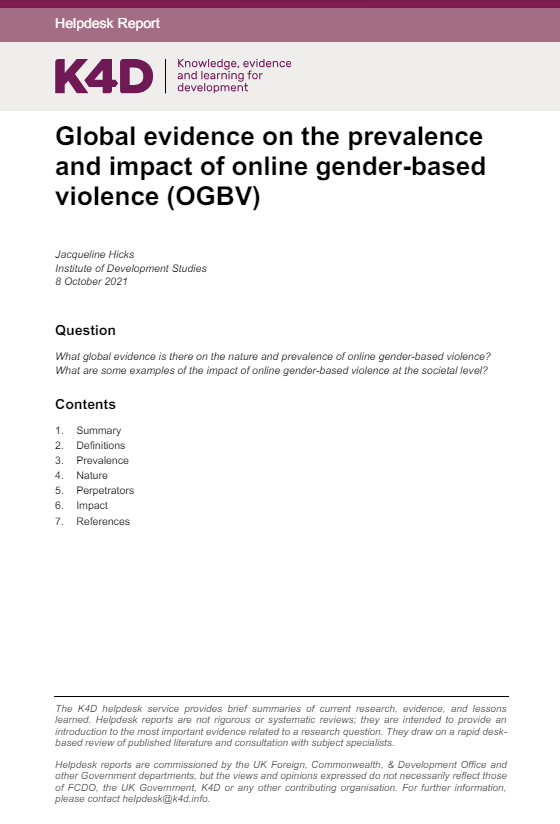This resource from the Knowledge, evidence and learning for development (K4D) programme is a rapid review of evidence on online gender-based violence. It updates a previous report (Fraser and Martineau-Searle, 2018) with evidence from 2018 onwards and covering a wider range of countries.
Some key findings on the nature and prevalence of online gender-based violence include: the most recent surveys show a prevalence of online gender-based violence ranging from 16 percent to 58 percent; men and boys also experience online abuse in high numbers, but it is less likely to be gender-based; several studies from different countries identify Facebook as the top location for incidents of online gender-based violence; higher levels of online harassment and abuse are faced by people with intersecting inequality factors; according to victim-survivors, perpetrators are more likely to be unknown and acting alone, but large numbers are known to the victims; perpetrators themselves report divergent, multifaceted and often over-lapping motivations for their actions; analysis of underlying drivers of online gender-based violence highlights an overarching theme of power and control, and heteronormative expectations around gender roles and sexual practice.
